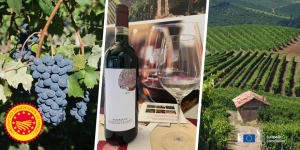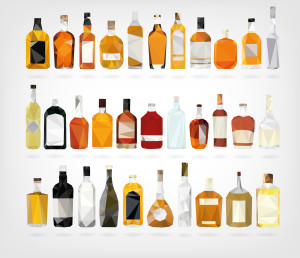On August 19 2019, the EU registered a protected geographical indication (PGI) for Absinthe de Pontarlier.
Absinthe is a well-known spirit drink with a fascinating and somewhat checkered history. By most accounts, it best-known for the period of time (1915 – 1990 and beyond) during which it was outlawed! Even in its modern incarnation, absinthe remains a mystery that has defied standardization and definition. It may be green, clear, or yellow in appearance; it is sometimes considered a flavored spirit drink and at other times may be referred to as a liqueur. While this disparity may continue into the future, as of now we have one absinthe product that is legally (and specifically) defined: Absinthe de Pontarlier PGI.
Absinthe de Pontarlier is a product of France and may only be produced in the French Departement of Doubs. (Doubs is located in the Alps of central-east France, along the border with Switzerland and surrounded by the French departments of Jura and Haute-Saône.) Historical records make mention of an “elixir d’Absinthe” being made in the region since the 18th century, when Major Henri Dubied moved his production facility—originally located in the Swiss town of Couvet (now a part of Val-de-Travers)—about 20 miles (32 km) west to Pontarlier, France.
Absinthe de Pontarlier may be produced using an unspecified base spirit, but the use of locally-grown wormwood (Artemisia abinsthium) is mandatory. In addition, the drying of the wormwood, the maceration of the botanicals, the re-distillation of the macerate, any post-distillation procedures, and the bottling of the spirit must all be carried out at a single location within the defined region of origin.
Other regulations for the production of Absinthe de Pontarlier include the following:
- The spirit must be clear and pale-yellow with greenish hues. When water is added, it becomes cloudy and opaque.
- It must contain a minimum 45% abv.
- In addition to Artemisia abinsthium, it must contain anise seed (Pimpinella anisum), both of which must be macerated in a base spirit. Roman wormwood (Artemisia pontica) and hyssop (Hyssopus officinalis) may be used for coloring. Lemon balm, fennel, and mint are specifically allowed to be used in limited proportations, as are “other aromatic plants with the exception of star anise.”
- The base spirit must be re-distilled after maceration with the required botanicals (wormwood and anise seed).
- No flavorings or extracts may be used, although some colorings are permitted.
- Sugar (up to 35 grams per liter of finished product) may be added, but is not required.
- Aging is allowed but is not required. A declaration of aging may appear on the product label if it is aged for a minimum of six months in oak.
Across the globe, absinthe is strictly regulated and the rules regarding its composition (mainly focusing on allowed levels of thujone) vary greatly across countries and regions. In the United States, the Alcohol and Tobacco Trade and Tax Bureau (TTB) has a proposal in the works that will require absinthe distributed in the United States to meet certain requirements for a maximum level of thujone and—although this has not yet been ratified into law—it remains to be seen whether or not Absinthe de Pontalier will be allowed to be exported into the United States. We might just need to take a trip to Pontarlier in order to have a sip!
Welcome to the world, Absinthe de Pontarlier PGI!
References/for more information:
- Technical File – Absinthe de Pontarlier
- Comminque de Presse – INAO-L’Absinthe de Pontarlier reconnue en Indication Géographiqu-20.08.2019
- Announcement via the INAO website: https://www.inao.gouv.fr/eng/Our-News/L-Absinthe-de-Pontarlier-reconnue-en-Indication-Geographique
Post authored by Jane A. Nickles, your blog administrator…


















